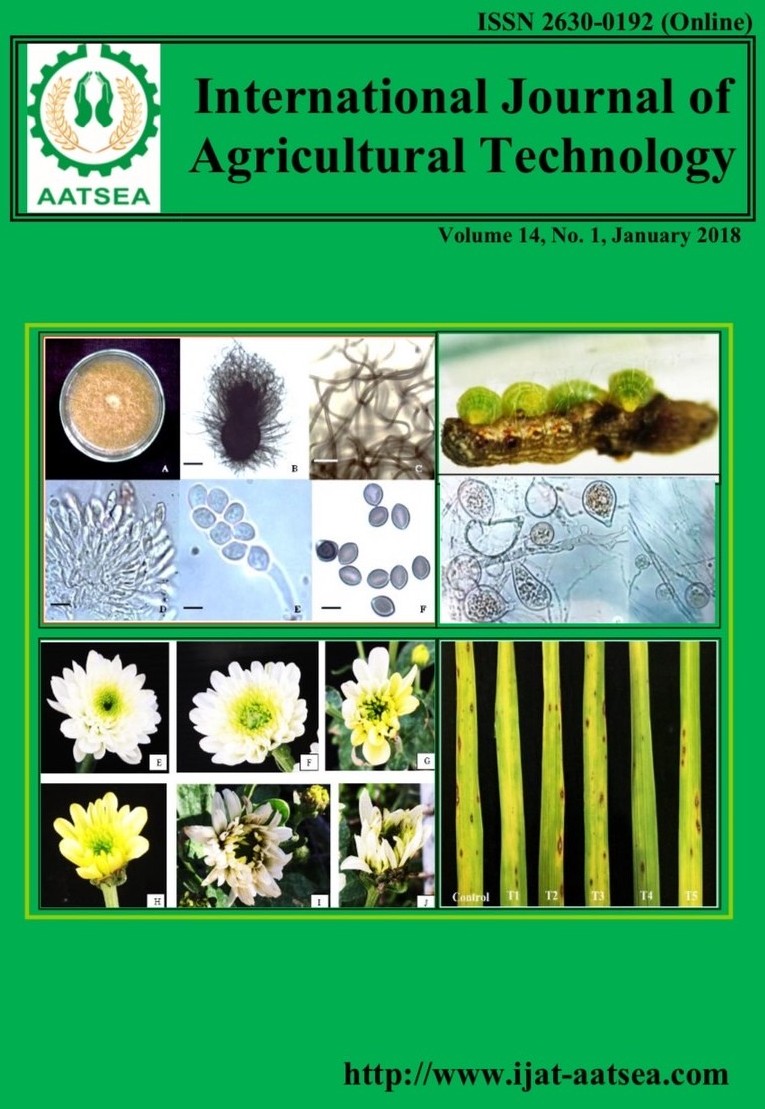The Length - Weight Relationship Factor and Sex-Ratio of Mantis Shrimp (Harpiosquilla spp) in Andaman Sea of Satun Province, Thailand
Main Article Content
Abstract
This study estimated the length-weight relationship, sex ratio and population parameters of mantis shrimp, Harpiosquilla spp. from the coastal waters of Andaman Sea, Satun Province, Thailand between February 2015 and March 2016. The length- weight relationship factor of Mantis Shrimp in Andaman Sea of Satun Province, Thailand was conducted for 12 consecutive months (February, 2015 – March, 2016). Data were collected from 437 individuals. The research method was surveyed, descriptive analyzed and interviewed. The most frequently catch fish was shown between 190-335 mm. They was positive allometric pattern. Length - weight relationship had equation (all samples) W = 0.0341L 2.6564 (R² = 0.8129) and (males) W = 0.0257x2.7425 R² = 0.8377 and (females) W = 0.061x2.481 (R² = 0.7239). Mantis Shrimp sexual dimorphism with sex ratio of 1.54 : 1.0 which was significantly biased in favour of males. The catch mantis shrimp still had a chance to mature and spawn. However, the fishery aspects become important in this case and may need to investigate. The study provided a basic and valuable information for the Mantis Shrimp fisheries management and population monitoring.
Article Details

This work is licensed under a Creative Commons Attribution-NonCommercial-NoDerivatives 4.0 International License.
References
Dinh, T. D., Moreau, J., Van, M. V., Phuong, N. T. and Toan, V. T. (2010). Population dynamics of shrimps in littoral marine waters of the Mekong Delta, South of Vietnam. Pakistan Journal of Biological Sciences 13:683-690.
Enin, U. I. (1994). Length-weight parameters and condition factor of two West African prawns. Revue d'hydrobiologie tropicale 27:121-127.
Forbes, A. T. (1973). An unusual abbreviated larval life in the estuarine burrowing prawn Callianassa kraussi (Crustacea: Decapoda: Thalassinidea). Marine Biology 22:361-365.
Gulland, J. A. (1983). Fish Stock Assessment. A Manual of Basic Method FAO/Wiley Series on Food and Agriculture, Rome. 241 pp.
Lagler, K. F. (1968). Sampling and Examination of Fishes. In: Methods for Assessment of fish Production in Freshwaters. W.E. Ricker, (Ed.). IBP, Handbook III. pp: 7-45.
Manfrin, G. and Piccinetti, C. (1970). Observations on the Squilla mantis L.etologiche. Laboratoria note the di Biologia Marina and Fishing-Fano 3:93-104.
Pauly, D. (1993). Length-converted catch curves: A powerful tool for fisheries research in the tropics. Fishbyte 1:9-13.
Stergiou, K. I., and Moutopoulos, D. K. (2001). A review of length-weight relationships of fishes from Greek marine waters. Naga, the ICLARM quarterly 24:23-39.
Wardiatno, Y. and Mashar, A. (2011). Population dynamics of the Indonesian mantis shrimp, Harpiosquilla raphidea (Fabricius 1798) (Crustacea: Stomatopoda) collected from a Mud Flat in Kuala Tungkal, Jambi Province, Sumatera Island. IlmuKelautan 161:111-118.


